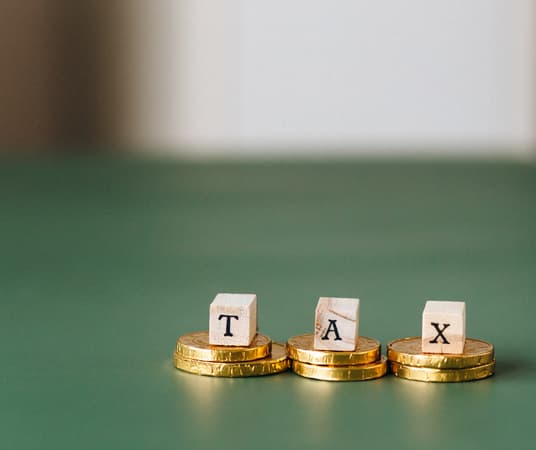Jump to a section
Financial forecasting is a critical activity for any small business owner. Effective financial planning and projections can make the difference between business success and failure. In this comprehensive guide, we will walk through the key elements needed to create realistic financial forecasts that empower better business decisions.
Understanding financial forecasting
Financial forecasting means predicting your future sales, expenses, and resulting profits by analysing historical numbers and trends then estimating how those patterns will continue. Develop accurate yearly and monthly projections to better manage your cash flow, set targets, make budgeting decisions and mitigate risks down the road.
Gathering financial data
To forecast properly, gather at least 3 years of previous financial statements. Take a look at sales volumes, profit margins, tax bills, payroll costs, and cash balances over time. Identify key market factors during those years that impacted your finances - for example, new competitors entering your space, changes in consumer spending habits or purchasing power, new industry regulations, etc.
Understanding what specifically drove fluctuations in your historical sales, expenses and profits allows you to make educated assumptions on how those market factors might continue to affect your projections moving forward. Key assumptions that historical performance can influence include rates of future sales growth or decline, envisioning best/worst case scenarios, and how quickly you may recover previous performance levels after downturns.
Sales forecasting
Brainstorm realistic factors that could grow or shrink monthly sales over the next year – the economy, new marketing campaigns, losing or gaining customers, new products. Choose a straightforward sales forecasting method like using a pipeline tracker or averaging previous growth. [going to add an image here]
Expense forecasting
Create a comprehensive list of all expenses needed to operate your business. Fixed expenses stay consistent month-to-month like rent, insurance, salaries, loan payments, subscriptions, etc. Variable expenses fluctuate based on usage like materials, utilities, marketing budgets, etc.
Categorise expenses appropriately. Count up what your actual annual expenses were across major categories over the past 2-3 years. Identify if any clear patterns emerged - for example, material expenses go up 10% each year.
Factor in assumptions on future cost inflation where reasonable - for example, assume a 4% rent increase next renewal cycle. For expenses with less predictable changes, develop best case, average case and worst case totals. For example, if a major supplier begins charging more or you must replace equipment.
Building these variables and assumptions into your expense forecasting analysis allows you to model different scenarios on how costs may evolve so you can set budgets, manage risk, and size up profitability.
Cash flow forecasting
Often the make-or-break factor for small businesses is managing cash flow properly. Project when you will receive sales revenue and when you must make expense payments month-by-month. Look for timing gaps and periods with more outflows than inflows. Have an emergency fund or line of credit to cover shortfalls.
Capital on Tap offers business credit cards with up to 42 days interest free and the ability to draw down cash to your bank account. This type of financing helps small businesses maintain smooth cash flow between the ebbs and flows.
Budgeting techniques
The key objective of financial forecasting is to feed into better budgeting. Start by combining your sales, expense and cash flow forecasts into an annual master budget document that includes:
-
Projected profit and loss statement: Pulling together forecasts for sales and expenses shows expected overall profitability.
-
Cash flow budget: Combines timing of projected sales, expenses, and net cash positions month-to-month so you can plan to cover any gaps.
-
Balance sheet budget: Projects what your business's asset and liability balances may look like at future period ends based on profits, reinvestments, debt paydowns.
With the frameworks created from your forecasting, assign your cash towards key business units and strategic initiatives that will drive growth and operations. For example, allocate marketing pounds per campaigns projected to bring in more sales. Adjust budgets on a quarterly basis as you compare actual financial results vs initial projections. Tweak strategies if certain activities perform better or worse than expected. Using budgets to tie forecasting to operations keeps plans realistic and businesses nimble.
Utilising financial forecasting tools
Financial projections involve complex modelling that can be assisted through online tools and software. User-friendly resources like QuickBooks, Sage Business Cloud, Zoho Books, Float or Finmark provide customised reports, scenario modelling, cash flow dashboards, and guidelines for more accurate forecasts based on your business's financials and metrics.
Scenario planning and risk assessment
Ask "what if" questions about delays, tax hikes, cost overruns to anticipate risks. Prep contingency funds and response plans that could keep the business stable in case of surprises that alter main forecasts.
Communicating the forecast to stakeholders
Financial forecasts set performance expectations and guide strategic decisions, so frequently communicate projections, underlying assumptions, and risks to key stakeholders - your staff, investors, lenders, advisors etc. Convey forecast numbers through monthly reports, dashboards, meetings etc. When sharing:
-
Summarise key indicators like sales growth rates, expense targets, expected cash positions.
-
Discuss major assumptions made - e.g. launch of new product line.
-
Identify best case and worst case scenario risks from analysis.
-
Relate forecasts back to business objectives and decisions being influenced by projected finances.
-
Create opportunities for scrutiny through Q&A, to improve models.
Ongoing, transparent communications keeps everyone aligned on financial expectations and business priorities informed by the forecasts.
Monitoring and adjusting
Once the year is underway, closely monitor actual financial results as they occur versus what projections had modelled. Set calendar reminders to review key forecast metrics on both monthly and quarterly bases. If sizable gaps emerge – for example, actual sales lagging estimates – dig into understanding why. Did certain assumptions prove incorrect? Has the market changed? What needs revisiting?
Tweak your forecasting models and the downstream budgets accordingly based on these learnings. Reissue updated forecasts to stakeholders. Continually fine-tuning projections based on realities that materialise keeps your business nimble to navigate changes. Ongoing monitoring ensures forecasts represent the most accurate picture allowing owners to steer confidently.
The bottom line
Creating financial forecasts takes work upfront. But it gives you a clearer picture of the road ahead. With forecasts, you can better plan how much cash you need, set targets, spot risks coming, and make decisions to reach goals.
Forecasting also helps you manage changes in the business world. By checking back on your projections as real numbers come in, you can make tweaks when things veer off course. Updating forecasts keeps your plans realistic.
No one can predict the future perfectly. But financial forecasts let you see trends early and prepare backup options if surprises happen.











